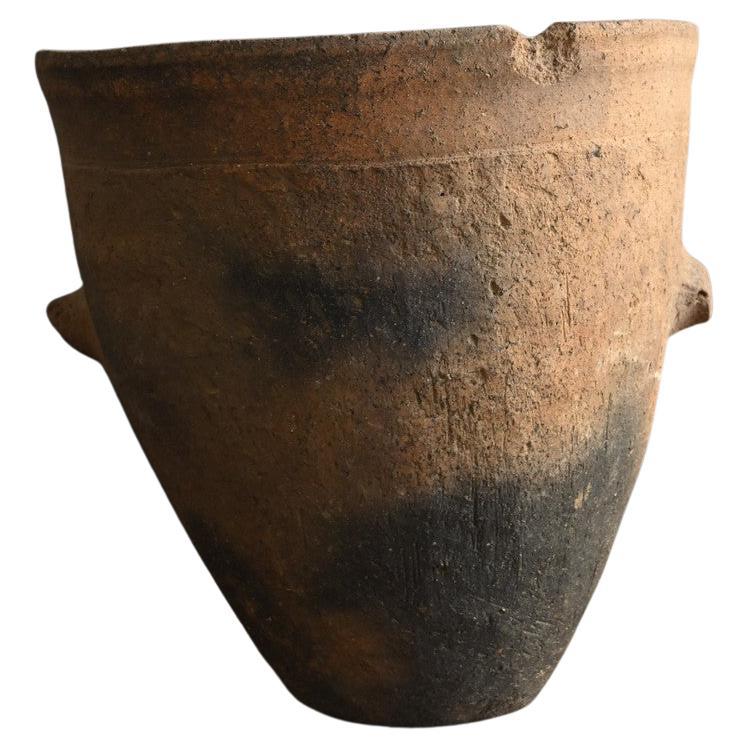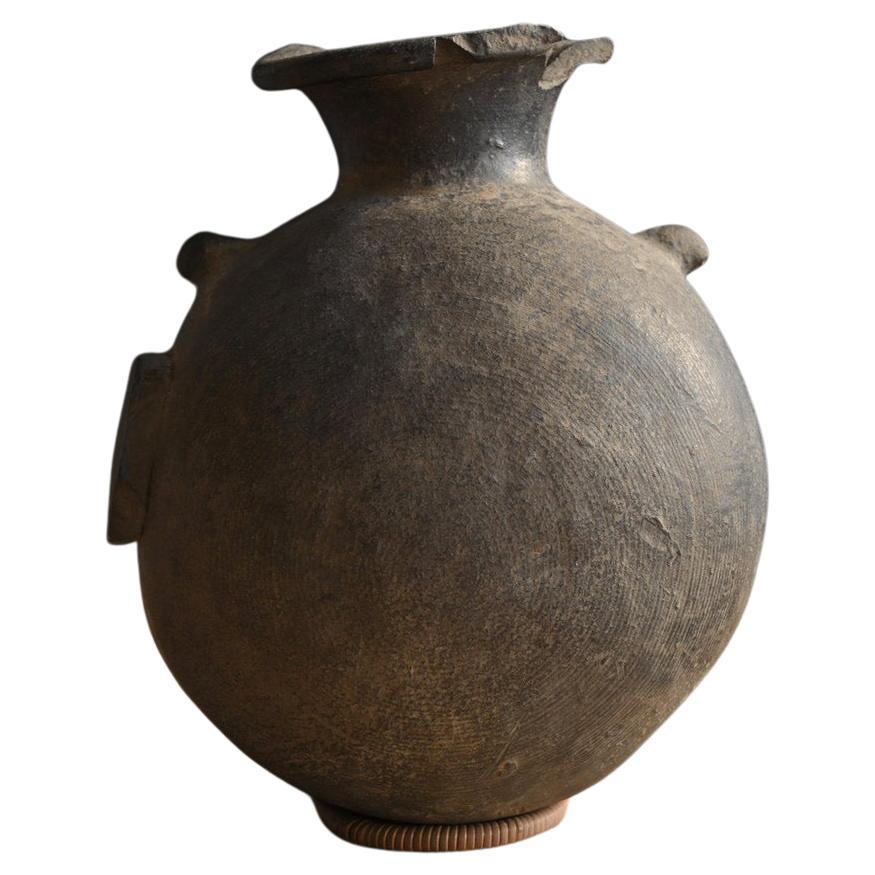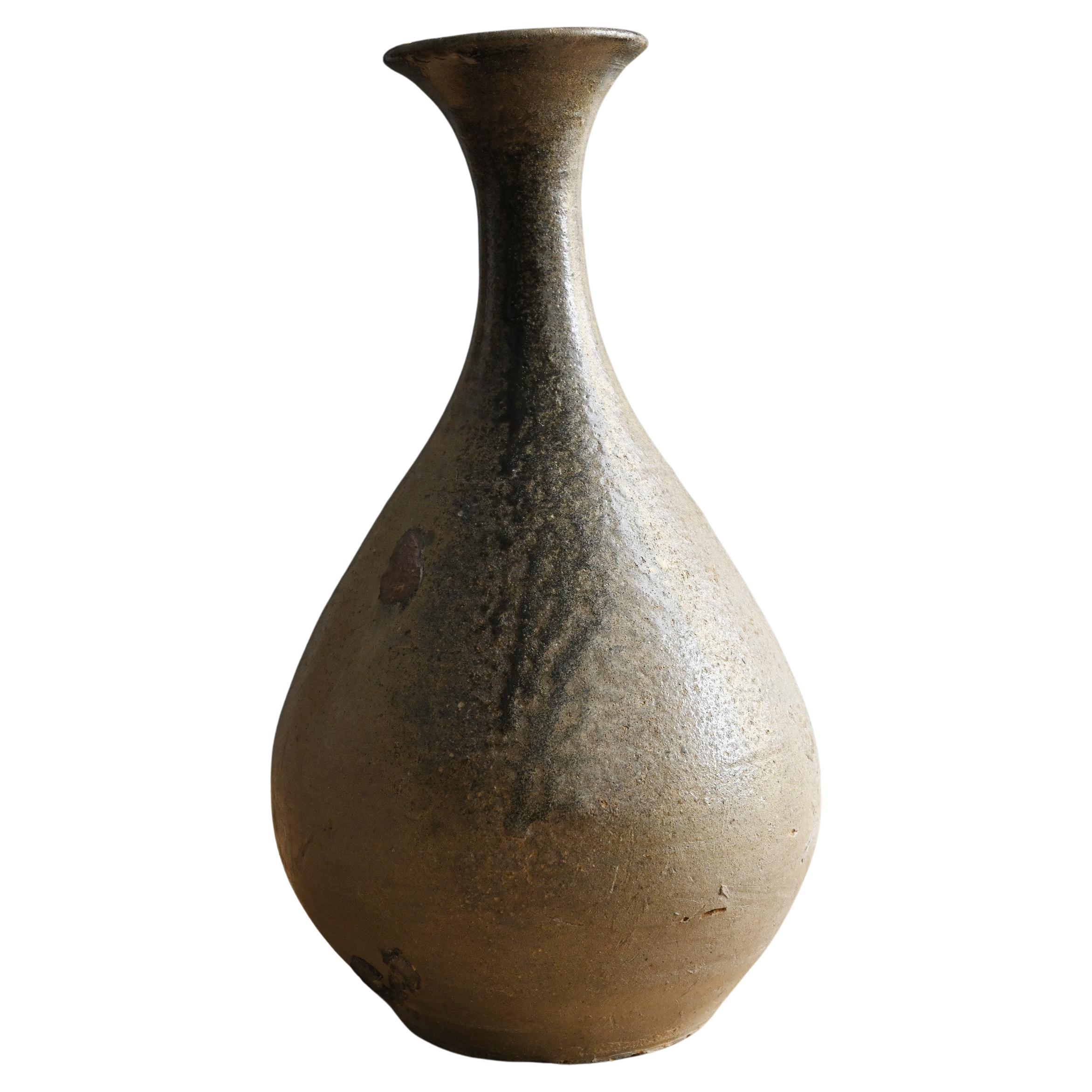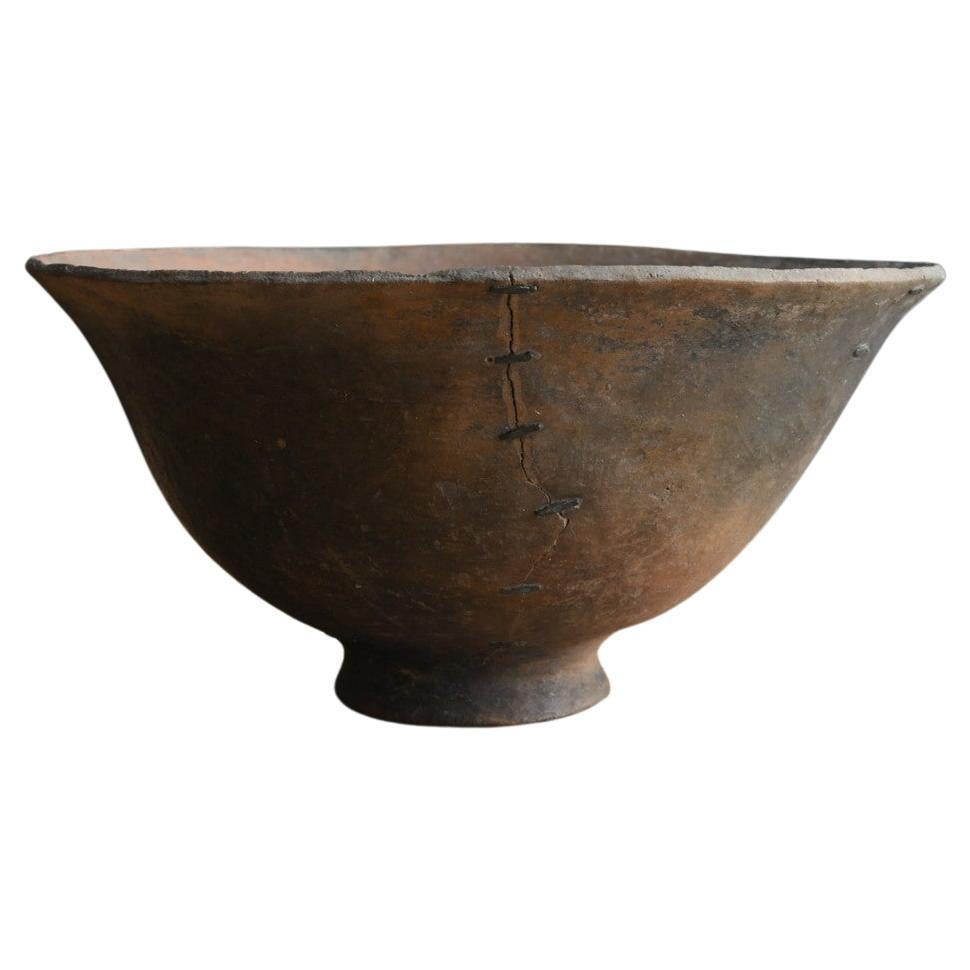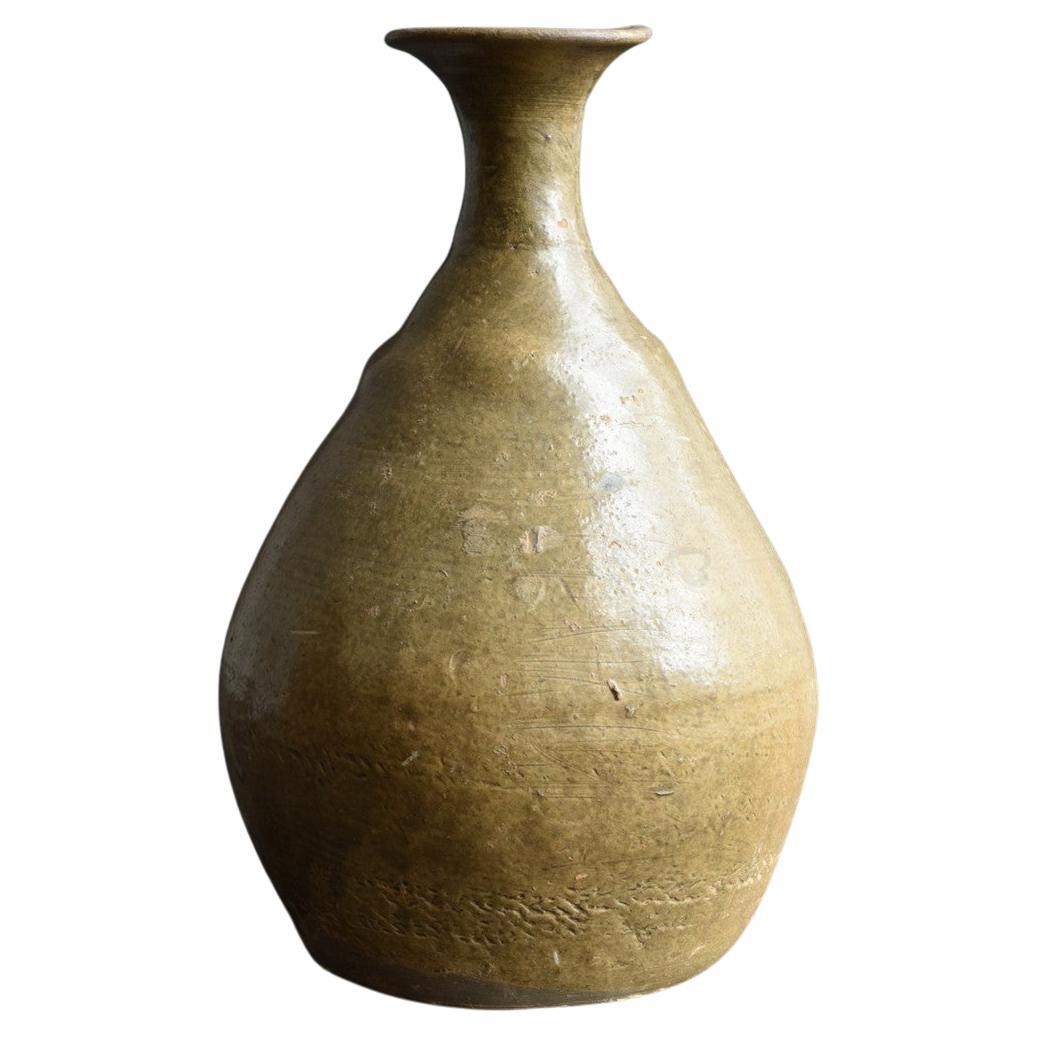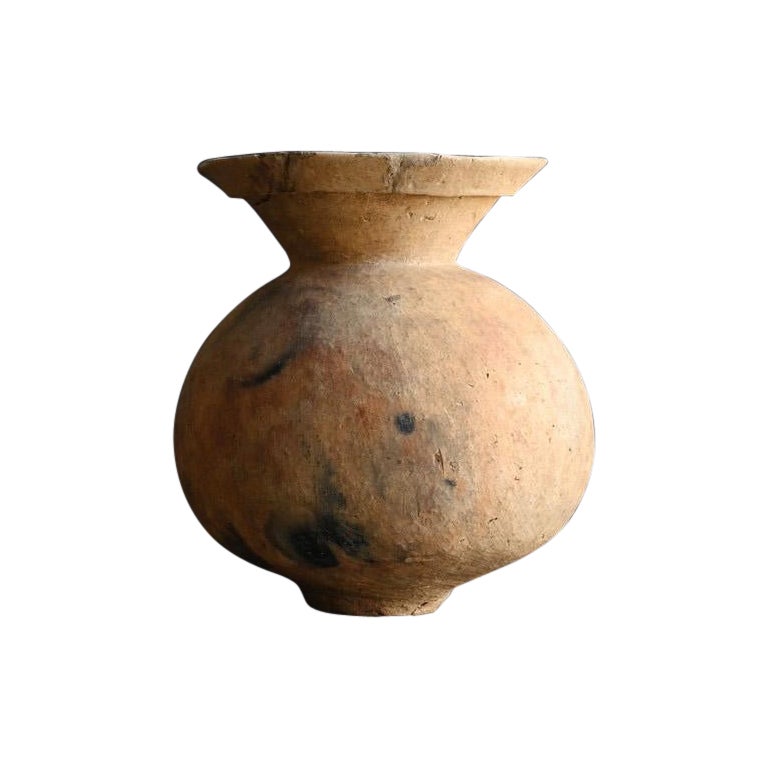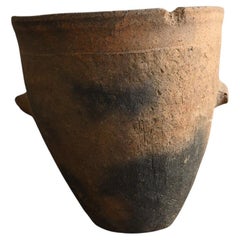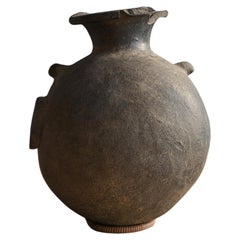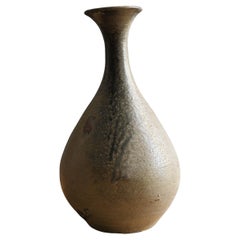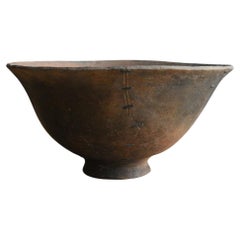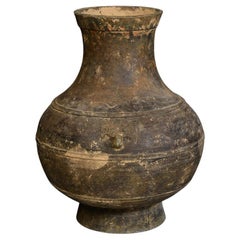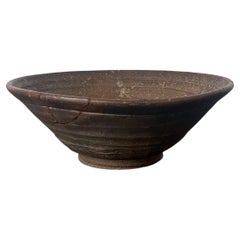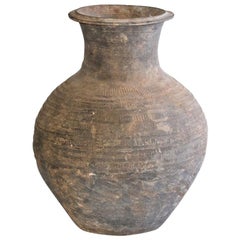Items Similar to Korean antique cup-shaped earthenware/excavated earthenware/hard earthenware
Want more images or videos?
Request additional images or videos from the seller
1 of 21
Korean antique cup-shaped earthenware/excavated earthenware/hard earthenware
$800
£614.61
€706.18
CA$1,125.30
A$1,264.22
CHF 660.56
MX$15,430.43
NOK 8,387.16
SEK 7,894.75
DKK 5,269.78
About the Item
This is a very old cup-shaped earthenware from Korea.
It was made in a country called "Kaya" located at the southern tip of the Korean peninsula.
This is fired at a kiln temperature of over 1,000 degrees, and because it is fired at a high temperature, the vessel walls are thin but hard like porcelain.
This technique was also introduced to Japan, where this type of gray earthenware is called "sueki."
The common theory is that "sue" means "iron" in Korean, so it means "earthenware as hard as iron."
When it was made before this, the firing temperature was low, so liquids would leak if they were poured into it, but this type of hard earthenware does not leak even if liquids are poured into it.
This earthenware was made around the 4th to 5th century and was excavated. It is thought to have been brought back by Japanese people when they went to the Korean peninsula.
This earthenware is cup-shaped with a round, string-like band attached to it, giving it the shape of a cup.
Even today, it has a modern design.
A distinctive feature of this piece is the lines on the surface. Similar lines can be seen on other forms of pottery.
There is also an arrow-like mark in one place, and such unique markings can also be engraved on pottery.
(Also, a similar piece was featured in an art book, so I have included a photo of it as a reference.)
This is a fascinating piece of pottery.
And in the photo, there is a red circle, which is a repaired area.
The bottom part is thought to be a part that was chipped and re-glued.
It can be used as a flower vase, but if you put water in it and leave it for half a day, the repaired part at the bottom will start to seep in, so avoid leaving water in it for long periods of time.
It also has an earthen smell, so it cannot be used directly as a drinking cup.
It has a worn-out texture that exudes a sense of wabi-sabi, and also has modern design elements.
It is a fascinating item that exudes a sense of eternal history.
It is also stored in a special wooden box.
It is a rare item that is hard to come by. Also, I want many people to know the goodness of antiques, so I set the price reasonably. How about showing off to your friends around you?
Weight: 0.4kg
We, Brood, are a company consisting of four different stores with four different brands.
We offer a wide range of attractive items from all over the world with a focus on Japanese items.
- Dimensions:Height: 4.45 in (11.3 cm)Width: 5.79 in (14.7 cm)Depth: 4.57 in (11.6 cm)
- Style:Other (Of the Period)
- Materials and Techniques:
- Place of Origin:
- Period:
- Date of Manufacture:Before the 9th century
- Condition:Repaired: After excavation, the pottery fragments were re-glued and partially restored. The skill was so high that it is difficult to tell that it had been repaired.
- Seller Location:Sammu-shi, JP
- Reference Number:1stDibs: LU5487241439142
About the Seller
5.0
Platinum Seller
Premium sellers with a 4.7+ rating and 24-hour response times
Established in 2015
1stDibs seller since 2020
1,607 sales on 1stDibs
Typical response time: 6 hours
- ShippingRetrieving quote...Shipping from: senzoku, Japan
- Return Policy
Authenticity Guarantee
In the unlikely event there’s an issue with an item’s authenticity, contact us within 1 year for a full refund. DetailsMoney-Back Guarantee
If your item is not as described, is damaged in transit, or does not arrive, contact us within 7 days for a full refund. Details24-Hour Cancellation
You have a 24-hour grace period in which to reconsider your purchase, with no questions asked.Vetted Professional Sellers
Our world-class sellers must adhere to strict standards for service and quality, maintaining the integrity of our listings.Price-Match Guarantee
If you find that a seller listed the same item for a lower price elsewhere, we’ll match it.Trusted Global Delivery
Our best-in-class carrier network provides specialized shipping options worldwide, including custom delivery.More From This Seller
View AllJapanese antique earthenware/Wabi-sabi objects/Unglazed pottery
Located in Sammu-shi, Chiba
I would like to introduce some earthenware with a very interesting shape.
This is an old excavated earthenware from Japan, called "Yayoi" or "Hajiki".
This item is from before the 9...
Category
Antique 15th Century and Earlier Japanese Other Antiquities
Materials
Pottery
Japanese Beautiful Antique Pottery/Sue Pottery/Around 9th Century/Excavated Vase
Located in Sammu-shi, Chiba
We have an aesthetic sense peculiar to Japanese people.
And we introduce the unique items that only we can do, the route of purchasing in Japan, the experience value so far, and the ...
Category
Antique 15th Century and Earlier Japanese Other Vases
Materials
Pottery
Korean antique pottery vase / Goryeo dynasty / 13th to 14th century
Located in Sammu-shi, Chiba
There is a long crack that has been repaired.
Detailed images 14th and 15th.
There is no water leakage, but please refrain from leaving water in it for more than two days.
Also, be s...
Category
Antique 15th Century and Earlier South Korean Other Vases
Materials
Pottery
South American antique earthenware pots/simple vessels/Wabisabi earthenware
Located in Sammu-shi, Chiba
It is thought to be excavated earthenware from around the 15th to 19th century.
Judging from the soil, texture of the surface, and shape, it seems to have been made in South America....
Category
Antique 17th Century Peruvian Other Antiquities
Materials
Pottery
Korean Very Old Pottery Vase/10th Century to 14th Century/Goryeo Dynasty
Located in Sammu-shi, Chiba
This is Korean pottery made between the 10th century and the 14th century.
At that time, it was called the Goryeo Dynasty, and various objects such as metalwork and pottery were mad...
Category
Antique 15th Century and Earlier South Korean Other Vases
Materials
Pottery
Very old Japanese excavated earthenware/Wabi Sabi vase
Located in Sammu-shi, Chiba
This is earthenware excavated in Japan.
It has a very beautiful shape and is well balanced.
The color of the pottery is light brown because it is fired at a low temperature.
Dependin...
Category
Antique 15th Century and Earlier Japanese Other Vases
Materials
Pottery
You May Also Like
Collection of Three Chinese Neolithic Pottery
Located in Atlanta, GA
A collection of three small Chinese Neolithic pottery jars consisting a red slender jar with large double ears, a grey and wide short jar wit...
Category
Antique 15th Century and Earlier Chinese Archaistic Ceramics
Materials
Ceramic
Han Dynasty, Antique Chinese Pottery Hu Jar
Located in Sampantawong, TH
Chinese pottery Hu jar decorated with bands of raised lines and a pair of monster masks on the shoulder.
Age: China, Han Dynasty, 206 B.C. - A.D.220
Size: h...
Category
Antique 15th Century and Earlier Chinese Antiquities
Materials
Pottery
$2,800 Sale Price
20% Off
Korean Ceramic Kakinoheta Chawan Tea Bowl
Located in Atlanta, GA
A "Kakinoheta" type ceramic chawan (tea bowl) made in Korean during Joseon dynasty circa 16th-17th century. The bowl has a slight irregular flat shape w...
Category
Antique 17th Century Korean Other Ceramics
Materials
Ceramic
Unglazed Antique Chinese Vessel
Located in Sheffield, MA
The antique Chinese clay vessel is handcrafted from clay and fired. Shallow enrelief bands encircle the upper part of the vessel.
Category
Antique Late 19th Century Chinese Chinese Export Vases
Materials
Clay
Han Dynasty, Antique Chinese Pottery Hu Jar
Located in Sampantawong, TH
Antique Chinese pottery Hu jar decorated with bands of raised lines and a pair of monster masks on the shoulder.
Age: China, Han Dynasty, 206 B.C. - A.D.220
Size: Height 46.6 C.M. /...
Category
Antique 15th Century and Earlier Chinese Antiquities
Materials
Pottery
Korean Ceramic Irabo Tea Bowl Chawan Joseon Dynasty
Located in Atlanta, GA
A ceramic chawan tea bowl made in Korea for Japanese market circa 17th century. The chawan is identified as Irabo type. Irabo bowls were essentially con...
Category
Antique 17th Century Korean Other Ceramics
Materials
Ceramic
More Ways To Browse
Japanese Earthenware
Wooden Cup
Korean Antiques
Antique Earthenware Vessel
Antique Japanese Cup
Antique Korean Porcelain
Antique Korean Art
Korea Box
Korean Porcelain Vase
Antique Southern Pottery
Antique Korean Vases
Asian Arrow
Antique Arrow Box
Japanese Iron Box
Antique Korean Box
Korean Antique Pottery
Antique Fire Call Box
Sue Pottery
